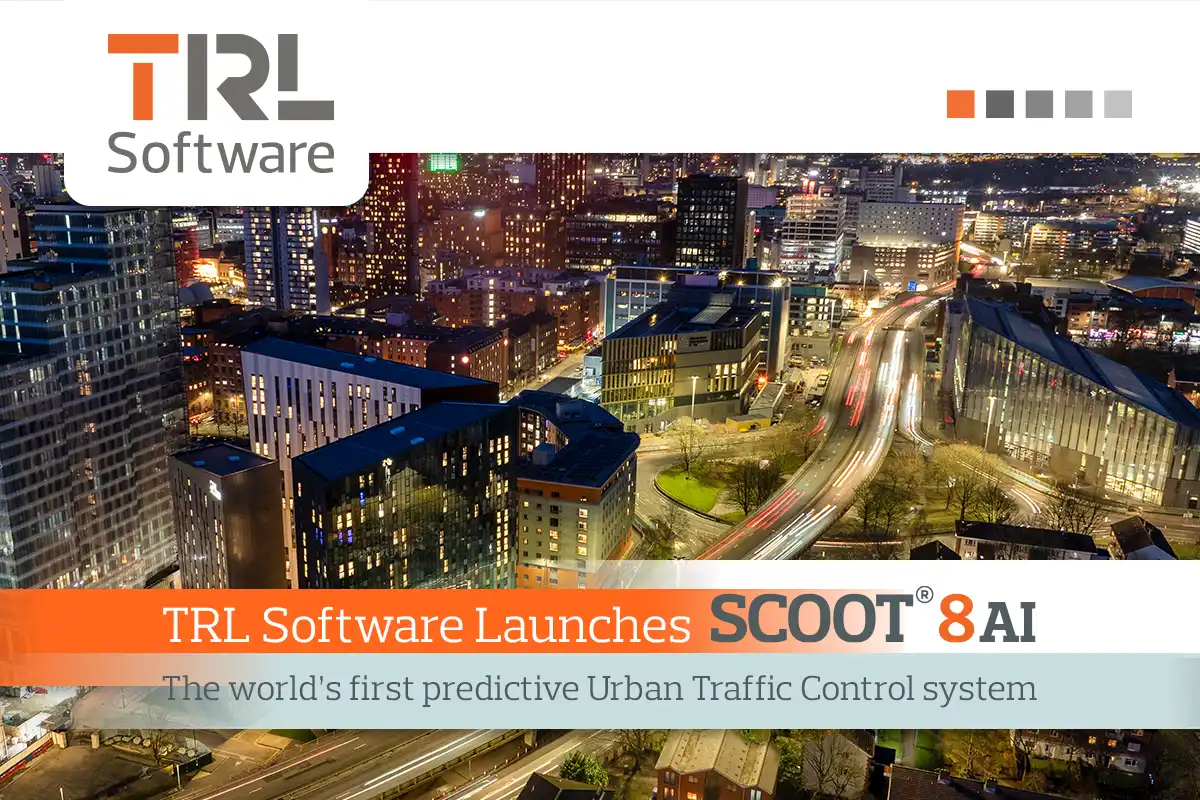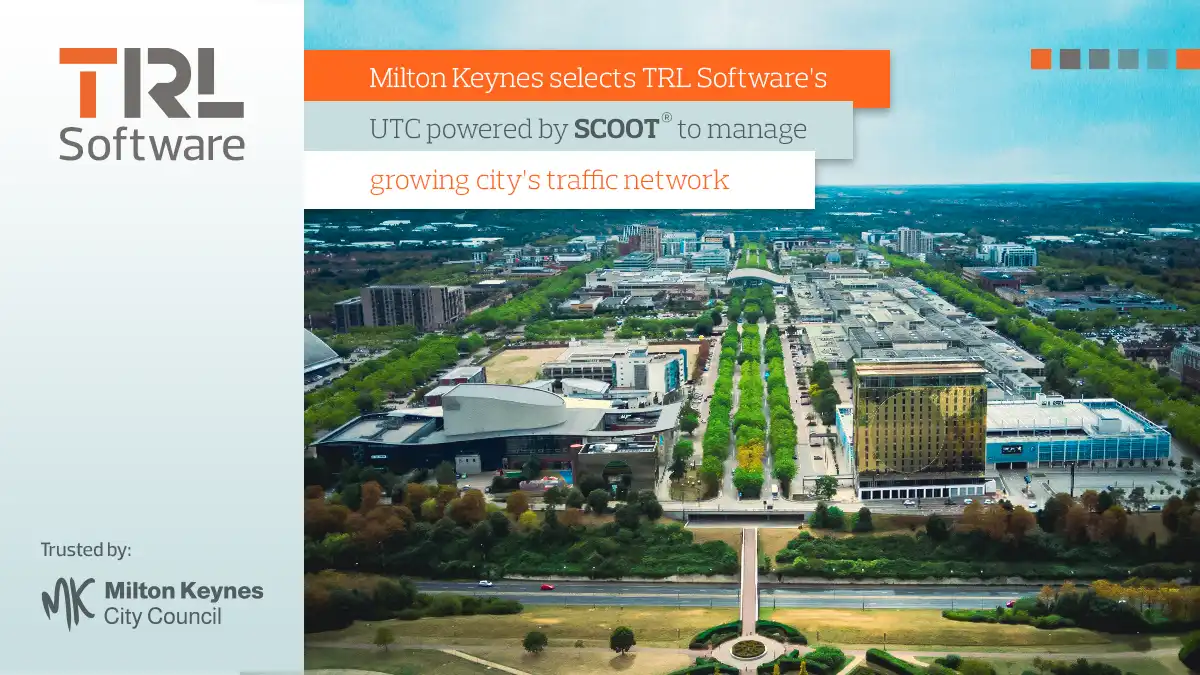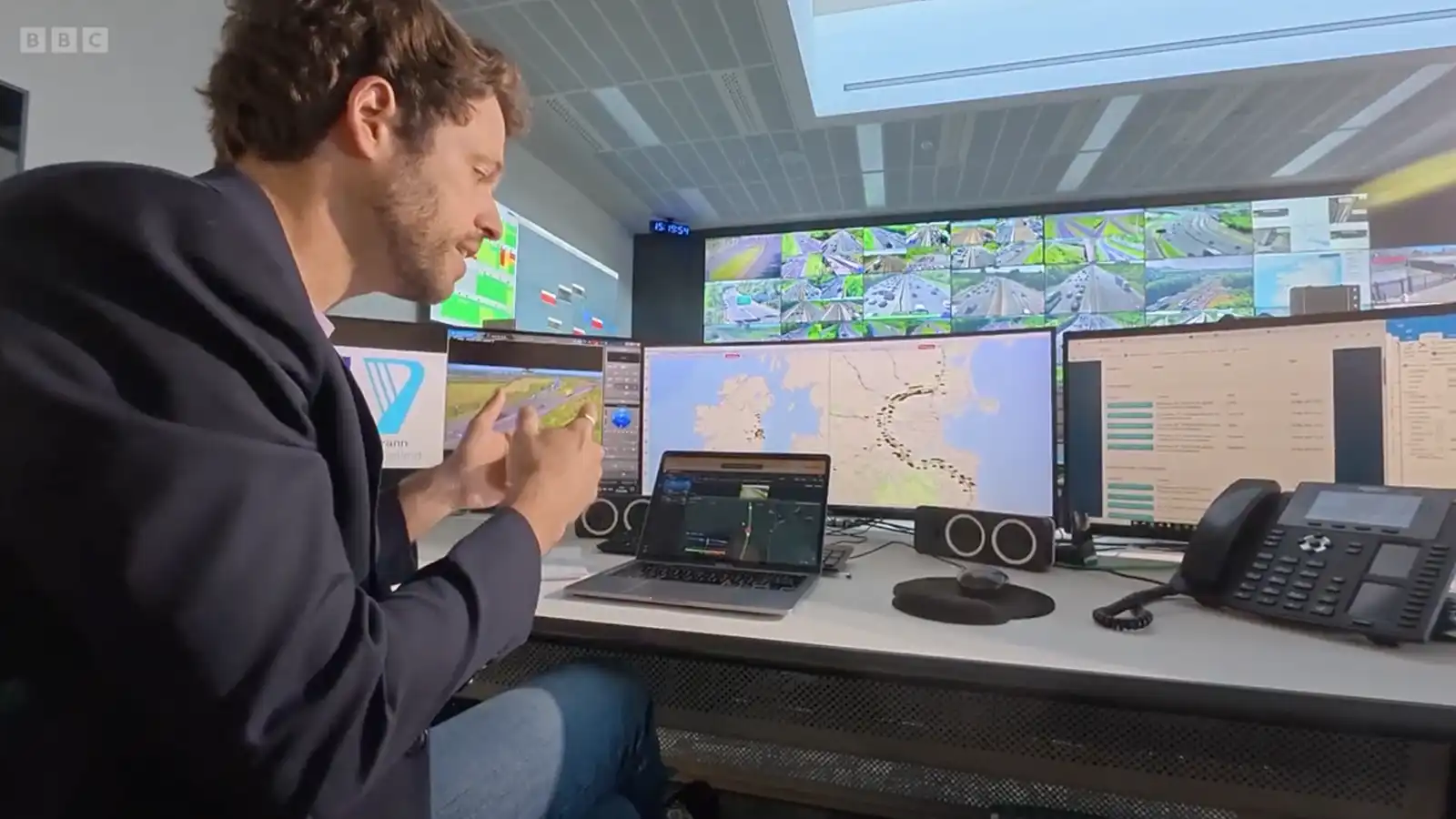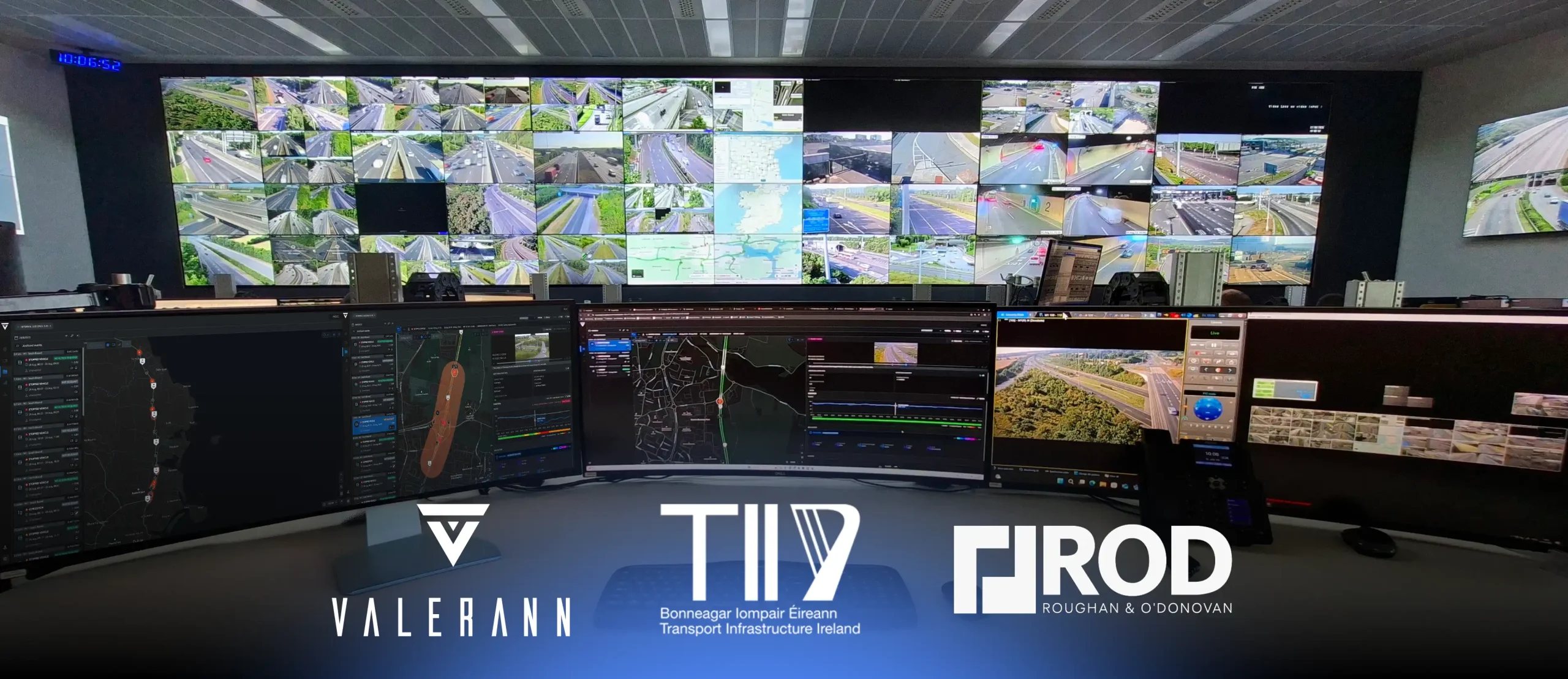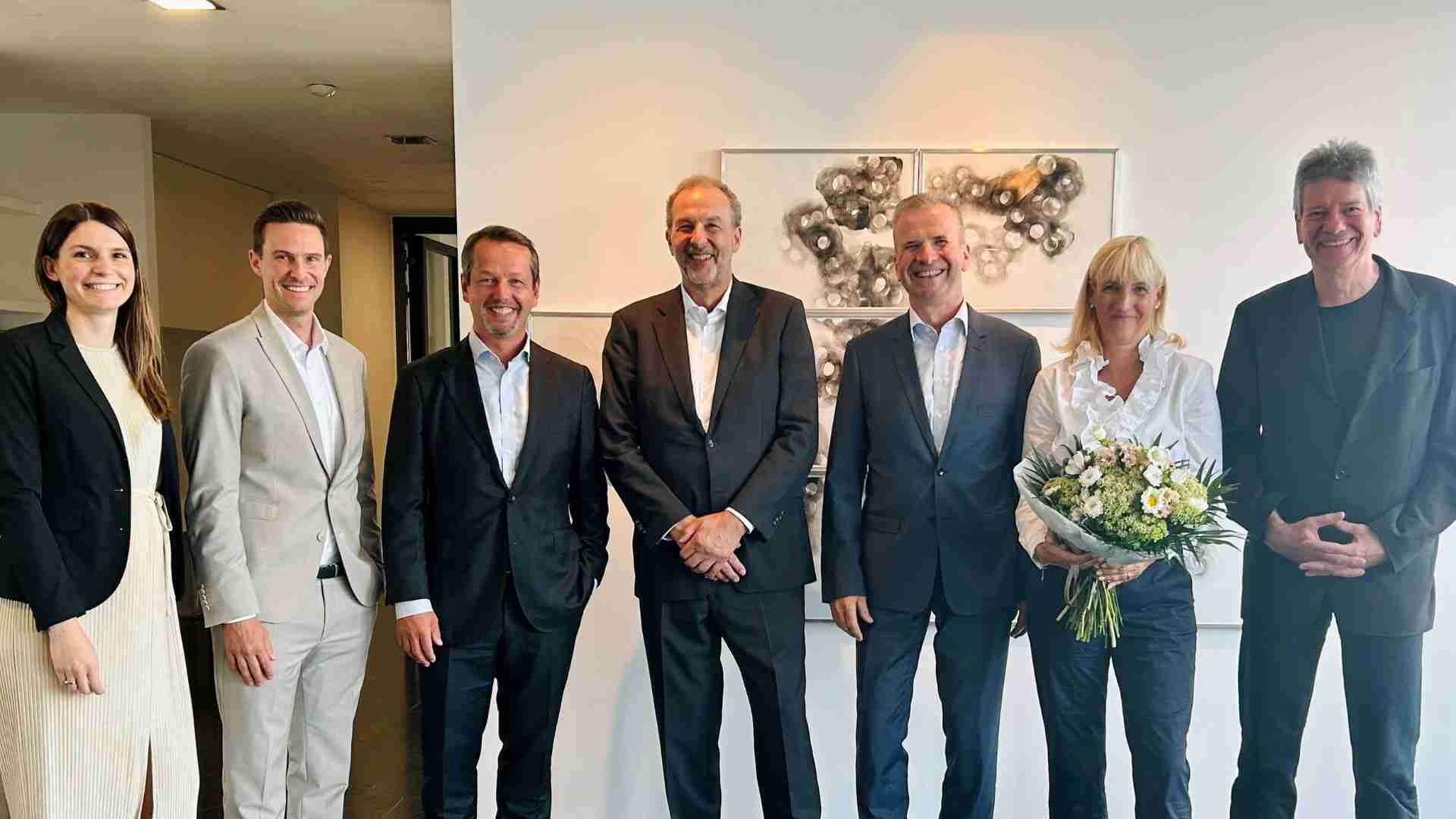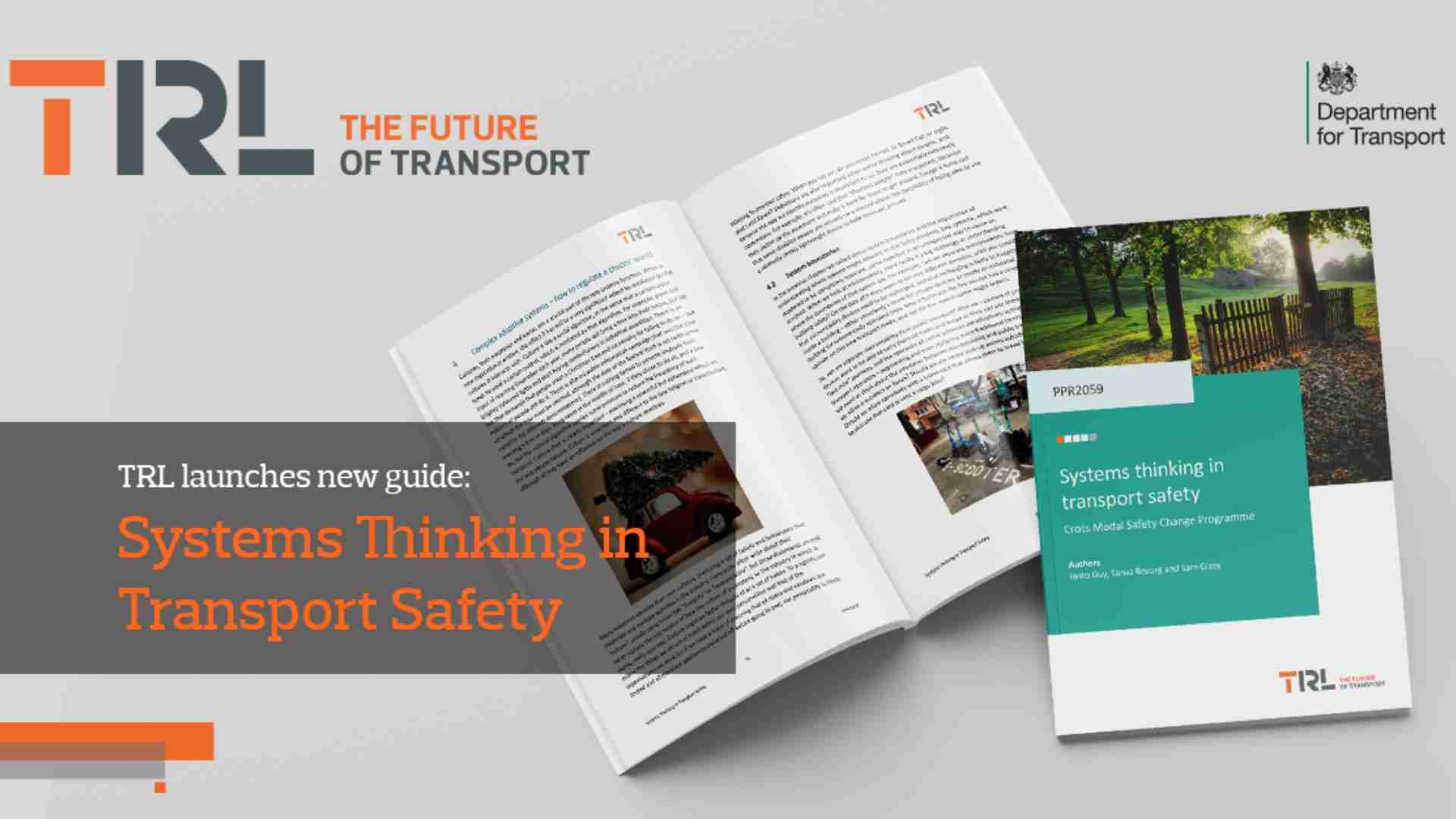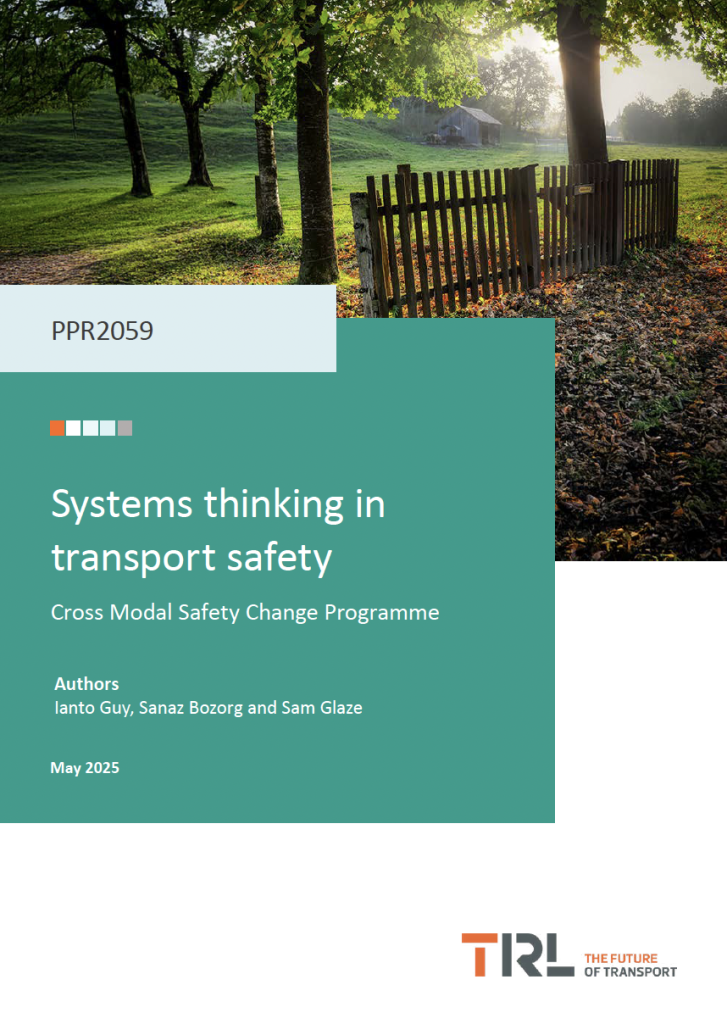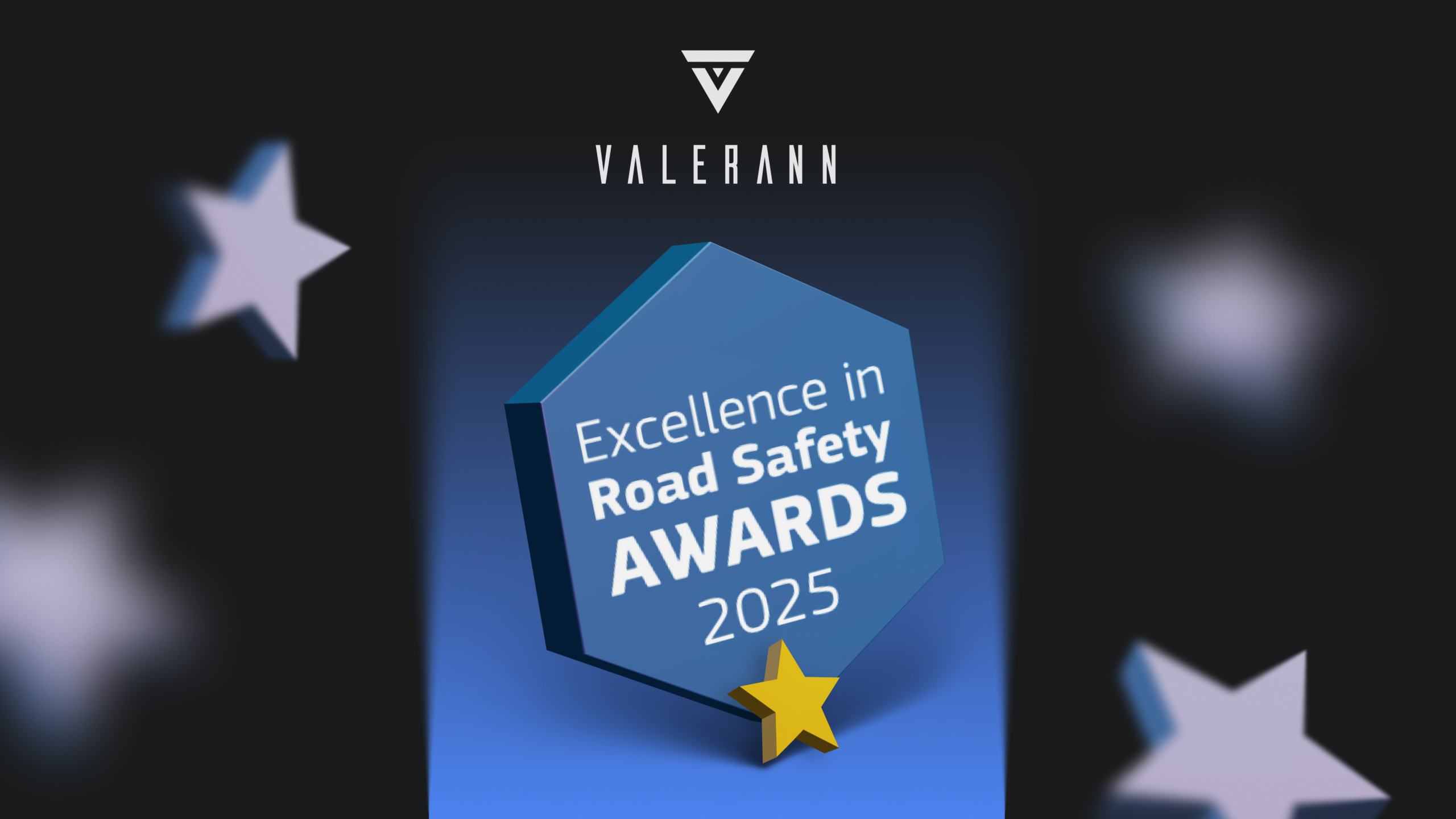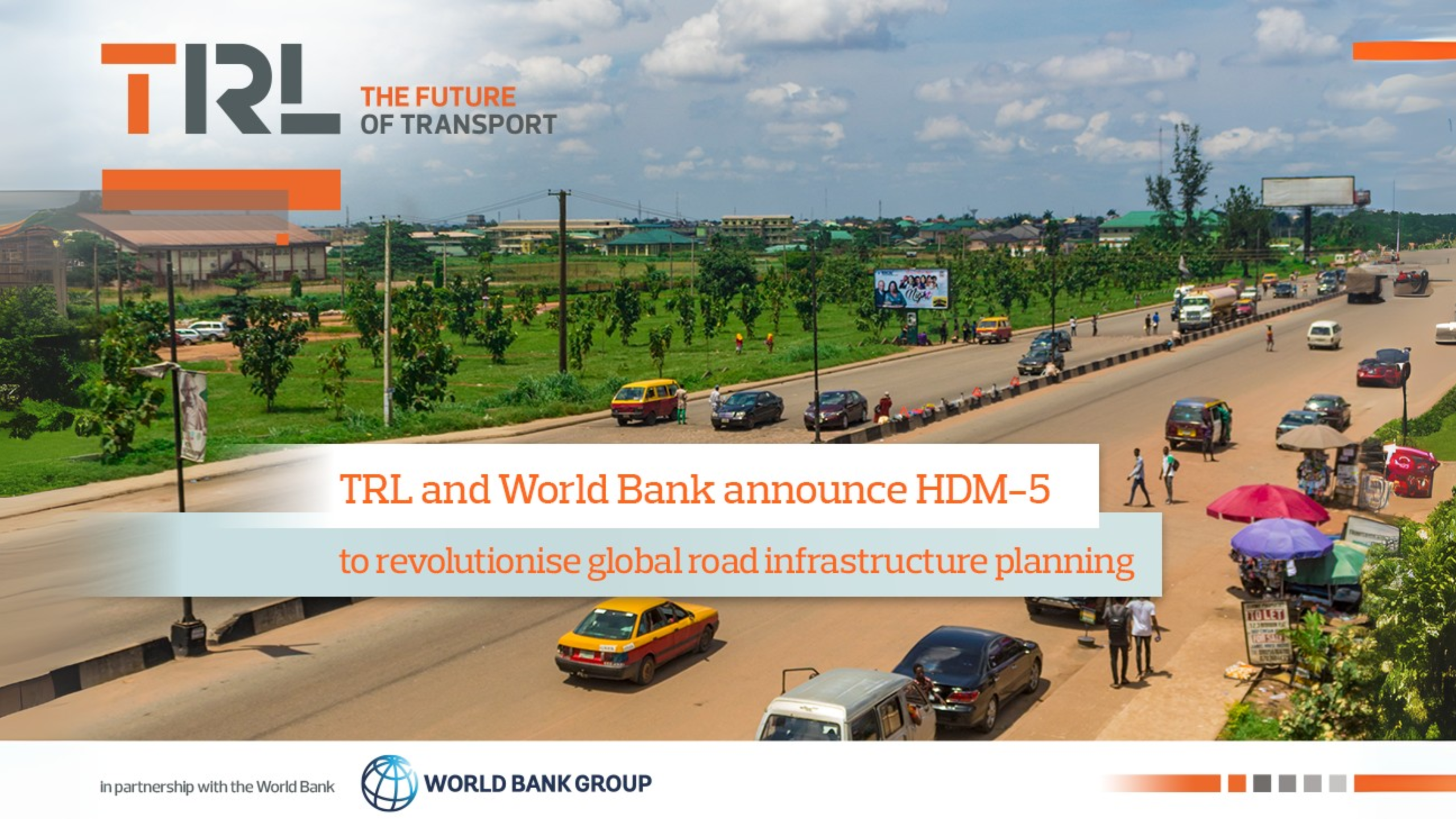From intrapreneurial initiative to independent start-up: ORIS Materials Intelligence accelerates its development
Paris, France - ORIS Materials Intelligence, a digital platform for sustainable infrastructure design (roads, railways), reaches a new milestone in its entrepreneurial journey. Initially incubated within the world-leading construction materials company, ORIS's historic shareholder, then registered as a commercial company in 2021, ORIS opens a new phase of its development with the entry of LIBERSET as a strategic investor, as part of a Series A funding round of 3 million euros.
This operation is accompanied by the establishment of renewed governance, led by its co-founders, Nicolas Miravalls and Renaud de Montaignac, and by a management team closely associated with the operational leadership of the company.
Through this corporate carve-out process, ORIS gains its capital and strategic independence, with an agile governance model and solid financing to support its growth and international deployment.
"This step is both an achievement and a new beginning. With Liberset alongside
us and a committed team, we have the means to deploy our mission to
transform linear transport infrastructures, to be better adapted to the challenges
of our time on a large scale," explains Nicolas Miravalls, co-founder and
CEO of ORIS Materials Intelligence.
Technology serving more sustainable and resilient infrastructure
The global linear infrastructure sector represents several hundred billions euros in yearly spendings, and faces increasing regulatory pressures (CSRD, EU Taxonomy, Green Public Procurement) and climate urgency.
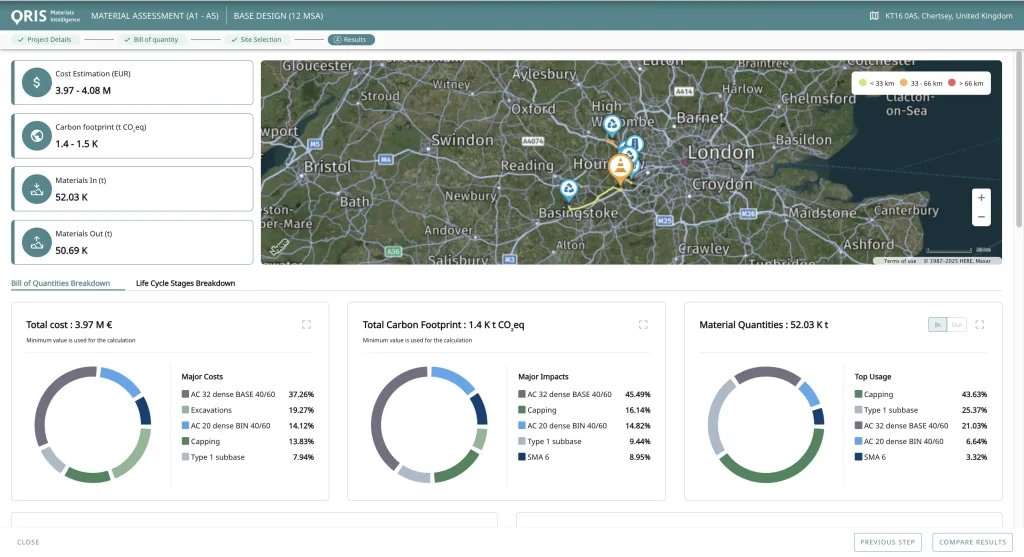
In this screenshot of ORIS Materials Intelligence, we can see a dashboard assessing the total cost, carbon footprint and material quantities for an infrastructure project, based on various databases integrated in ORIS.
The ORIS Materials Intelligence platform, based on artificial intelligence, data science, and engineering, enables project owners, engineers, and local authorities to:
- Measure the environmental footprint of projects from the design phase
- Optimise technical choices and the use of local resources
- Reduce CO₂ emissions and construction costs
- Anticipate climate resilience of projects
In 2024, ORIS identified solutions enabling its clients to avoid 3.1 million tons of CO₂, save 4.4 million tons of primary resources, and reduce costs by 20 million euros, across more than 18,500 km of analysed road projects.
"This transition to an independent structure gives us the agility necessary to
innovate more rapidly, while remaining faithful to our founding mission:
putting science and technology at the service of sustainable and resilient
linear transport infrastructure," adds Renaud de Montaignac, co-founder
and COO of ORIS Materials Intelligence.
A mission-driven company led by sector experts
ORIS has been a Mission-driven Company since 2024. Its purpose: to accelerate the ecological transition of the construction sector by using digital technologies to integrate environmental and social data from the earliest design phases.
About the co-founders
Nicolas Miravalls, co-founder and CEO of ORIS, benefits from solid expertise in developing and managing complex projects in the infrastructure universe. After 20 years in the industry in contracting, consulting, and construction materials, he dedicates himself with ORIS to the digital transitions of the sector.
Renaud de Montaignac, co-founder and COO of ORIS, holds a PhD in civil engineering with an international background in transport infrastructure, engineering, and sustainable innovation. He has led numerous projects combining engineering, new technologies, and environmental performance.
Together, they carry a shared vision: digitalization is a key lever for transforming linear infrastructure construction toward greater sustainability, efficiency, and resilience.
LIBERSET, strategic partner to scale up ORIS
With this funding round, ORIS notably plans to accelerate its product roadmap, strengthen its international presence, and scale up its impact with major project owners and engineering firms.
"The digitization of the infrastructure sector is ushering in a new era, where
performance, traceability, and sustainability are becoming key drivers of
competitiveness. ORIS Materials Intelligence is a pioneer in offering holistic
solutions that transform materials management and optimization, delivering
more resilient, cost-competitive, and low-carbon infrastructure. Its platform,
combining artificial intelligence, data, cutting-edge sector expertise, and ease of
adoption, is redefining the way projects are designed and managed for all major
market players. Alongside its founders and teams, we are mobilizing our
international network of investor family offices to accelerate its development and
amplify its global impact. We are convinced that ORIS is set to become a key
player in the sustainable and competitive digitalization of tomorrow's
infrastructure," concludes Damien Bourel, Co-founder & Managing Partner
of LIBERSET.
About ORIS
ORIS Materials Intelligence offers cloud-based software that measures and optimises carbon emissions in linear transportation infrastructure. It empowers the infrastructure construction eco-system to make informed decisions to reduce carbon emissions by up to 50% and natural resources by up to 80%. Issued from an intrapreneurship initiative and incubated within the world’s leading construction materials company, the ORIS platform enabled to compare multi-criteria solutions to design low-carbon, resilient, and cost-effective infrastructure projects.
Headquartered in Paris, with an office in Lyon and representatives in Europe and Asia, ORIS collaborates with industry leaders such as Sweco, Ramboll, and AECOM, as well as authorities such as Die Autobahn, the Asian Development Bank, and UNIDO to enhance project sustainability from the design stage.
Recognised for its innovative and transformative approach to civil engineering, LCA, climate resilience, data science, and AI, ORIS won the International Road Federation 2024 Award in the “Decarbonisation and Circular Economy” category.
About LIBERSET
LIBERSET is an investment company backed by leading family offices, dedicated to accelerating the
international growth of high-growth companies shaping a new era of sustainable industrialization.
These companies provide an essential foundation for combining competitiveness and adaptation to
major global challenges, driven by their disruptive technologies, advanced data intelligence, and cutting-edge industrial solutions. LIBERSET operates in Europe and the United States, drawing on its unique network of contributing investors across three strategic verticals reflecting their areas of expertise: “New Consumption,” “Clean Technologies,” and “Better Cities.”
TRL Software Launches SCOOT® 8 AI
TRL Software has launched SCOOT® 8 AI, the world’s first AI-powered predictive solution for Urban Traffic Control (UTC).
Building on five decades of SCOOT® experience from TRL, this groundbreaking evolution of the globally trusted SCOOT® introduces artificial intelligence capable of forecasting traffic conditions up to 30 minutes in advance – empowering cities to prevent congestion before it occurs.
SCOOT® 8 AI delivers journey-time reductions of up to 15% compared with current generation systems, and even greater gains for cities upgrading from earlier versions. By combining proven adaptive signal control with predictive AI, TRL Software enables a shift from reactive traffic management to proactive optimisation.
SCOOT® 8 AI offers a range of key innovations and benefits, including predictive control that forecasts network demand and automatically adjusts signal timings for smoother traffic flow, reduced delays, and faster incident response, all without costly microsimulation.
Its intelligent automation uses self-optimising algorithms to cut manual interventions and features built-in anomaly detection that can identify incidents up to 40% faster, often before emergency calls are made.
The system is hardware-agnostic and integrates seamlessly with existing infrastructure, protecting previous investments while adding future-ready capabilities such as support for active travel and connected or autonomous vehicles.
Real-time performance dashboards track return on investment and allow integration with third-party platforms like Waze for Cities, ensuring continuous, data-driven optimisation.
SCOOT® has been managing traffic flow in more than 350 towns and cities worldwide for nearly 50 years and is widely regarded as the gold standard in adaptive signal control.
As the original developer, TRL Software is the exclusive source for SCOOT® 8 AI, ensuring cities receive authentic expertise, full support, and continuous innovation.
With growing challenges around congestion, emissions, and road safety, SCOOT® 8 AI provides transport authorities with a robust, future-ready platform that delivers measurable results and a typical return on investment within 12 months.
Christopher Kettell, Chief Technologist at TRL Software, said “SCOOT® 8 AI represents a fundamental shift in how cities manage traffic. By combining our proven adaptive control with predictive AI, we are not just responding to congestion, we are preventing it. More importantly, we are tracking every outcome to give cities real confidence that their investment is delivering tangible results on their streets.”
Milton Keynes City Council selects TRL Software’s UTC powered by SCOOT®
Milton Keynes City Council has appointed TRL Software to deploy its cutting-edge Urban Traffic Control (UTC) system, powered by the world-renowned SCOOT® signal optimisation technology, across the city’s signal-controlled junctions. This decision marks a major milestone in the Council’s strategy to build a smarter, greener, and more responsive transport system, aligned with the vision laid out in MK Futures 2050, the new City Plan, and the developing Local Transport Plan 5.
Supporting a Future-Focused Urban Vision
With Milton Keynes projected to grow significantly in population, economic activity, and transport demand over the coming decades, the city’s highway infrastructure needs to evolve to remain fit for purpose. Its grid-based road network, already distinctive in the UK, offers a unique opportunity to implement future-focused traffic management strategies that adapt to real-time conditions and anticipate future growth.
The implementation of TRL Software’s UTC powered by SCOOT® enables real-time signal control across junctions by dynamically adjusting traffic light timings in response to actual traffic conditions. Unlike traditional fixed-time systems, the SCOOT® algorithm continually responds to traffic flow, minimising delays and optimising journey times for all road users, including drivers, public transport, pedestrians, and cyclists.
TRL’s UTC system will allow Milton Keynes City Council to monitor and manage its traffic network more efficiently through a unified digital platform, providing data-rich insights and enabling evidence-based decision-making. The system is expected to deliver a range of benefits: improving journey times by reducing stop-start traffic, lowering vehicle emissions through more consistent traffic flow, and better accommodating the needs of public transport, pedestrians, and cyclists alike. In addition, it will provide a robust and flexible foundation for integrating emerging technologies such as connected and autonomous vehicles, making the transport network not only more efficient and inclusive, but also truly future-ready.
Christopher Kettell, Chief Technologist for TRL Software, said:
“Milton Keynes has long been a pioneer in transport innovation, and we are proud to be supporting the city as it continues to lead by example. Our UTC powered by SCOOT® system is a proven technology, designed to make urban traffic networks more efficient, more resilient, and more environmentally responsible. This deployment will not only improve today’s journeys but also lay the groundwork for the transport technologies of tomorrow. It is an exciting time to be part of this”
A Partnership Grounded in Innovation
The decision to work with TRL Software reflects the Council’s commitment to partnering with experts in intelligent transport systems (ITS) and leveraging proven technologies to deliver smarter, people-centric outcomes.
Cllr Jennifer Wilson-Marklew, Cabinet Member for Public Realm at Milton Keynes Council, added:
“As Milton Keynes grows and evolves, we must ensure our transport systems grow with it, not only in scale, but in intelligence and adaptability. Working with TRL Software gives us access to a sophisticated traffic management platform that aligns with our wider objectives around clean growth, digital infrastructure, and city-wide innovation. This investment supports our vision to deliver a seamless, safe, and sustainable transport experience for everyone who lives, works, and travels in Milton Keynes.”
Building Towards 2050 and Beyond
This project is a key enabler for the broader ambitions set out in MK Futures 2050, a strategic framework that reimagines how Milton Keynes will look and function in the middle of the 21st century. The plan calls for bold action across infrastructure, mobility, environment, and digital transformation, with smarter traffic management identified as a foundational component.
Milton Keynes’ adoption of TRL Software’s UTC powered by SCOOT® reinforces the city’s position as a leader in transport innovation and urban planning and demonstrates how local authorities can use smart systems to unlock long-term economic and environmental value.
BBC Tech Now features Valerann
Valerann has been awarded the 2025 Toll Excellence Award by the International Bridge, Tunnel & Turnpike Association (IBTTA). The recognition highlights Valerann’s collaboration with Transport Infrastructure Ireland (TII) and Roughan & O’Donovan (ROD) to improve incident detection and response on Ireland’s motorway network using its AI-powered data fusion platform, Lanternn by Valerann™ (LbV).
Recently, BBC Tech Now covered the story, featuring it on their channel. You can watch the video here:
Read video transcription:
Our busy roads can be dangerous places. But inside this building, there are people watching the roads to keep them safe.
BBC: Look at this! Andrew, what is this?
Andrew O'Sullivan (Senior Operations Manager, Transport Infrastructure Ireland): This is the Motorway Operations Control Centre where we look at and monitor and watch 1300 km of Irish motorways.
BBC: So, this is the whole country, essentially?
Andrew: That is the whole country.
BBC: Amazing.
Andrew: All of Ireland.
BBC: What are the people here doing? What kind of things are you looking out for?
Andrew: The ledge here are looking for breakdowns where people have gotten into difficulty. They're broken down on the side of the road. They may be looking for collisions. They may be looking for debris. You lost loads, cargo straps, that type of thing lying on the road. Another problem we would have is pedestrians and cyclists ending up in the motorway network.
The huge bank of screens gives you a sense how challenging that task is, which is why staff are getting help spotting incidents and accidents from an AI system made by a startup called Valerran.
Well, as you can hear, the road generates a lot of noise. It also generates a lot of data from things like navigation apps and CCTV. And Valerann's AI analyses that data to spot hazards and raise the alarm.
Michael Vardi (Co-Founder of Valerann): So you'd have a camera like that one over there that can monitor traffic. You'd have roadside radars that automatically detect instances or even underground sensors that count and classify traffic. Phones with navigation apps and social media share information about risks and incidents. And what our system does is it collects this wealth of information.
BBC: Give me an example of a time where the AI flagged something to the operators here.
Michael: In this case, we're looking through about 11 and a half thousand alerts every single day. And our system goes through that and picks the most important ones. In this case, we had alerts from WAZE navigation app where people drive along the motorway, use this navigation app, and if they see an incident, they report it.
The AI also noticed that traffic speed in blue absolutely dropped to under 40 km an hour. Our AI also sieves through and processed the video footage in the area. What you can see in this replay is that traffic speed is flowing normally. And, as I fast forward, you can see all of a sudden a breakdown of traffic all to the point where vehicles are actually stopping in the live lane. And so when the AI raised all this, the operator looked at this event, immediately validated and sent over a response that indeed it was a collision.
In this example from America, the system raised an alert when this truck left the road and disappeared from view. Valererann tells us that, luckily, the driver escaped serious injury.
Dr. Robert Corbally (Research & Innovation Lead Roughan and O'Donovan): What we saw was that the operators were able to see things a bit quicker and on average when the system alerted them of something that they didn't know about already, it typically alerted 10 or 15 minutes before they would have found it otherwise.
BBC: AI is advancing all the time. What's the future of this technology?
Michael: As data becomes more available and AI becomes more effective, this type of life-saving technology can be applied to all roads. Suddenly, more remote communities and small rural roads can enjoy the same benefits of active monitoring response as these busier networks.
BBC: The obvious question that springs into people's minds is it going to be start start replacing human beings?
Andrew: No, not at all. As technology is evolving, there's more and more data being generated. The problem with data generation [is that] it takes people to interpret it and how we use it currently. This tool lets us use that data and provide that information to operators to do something meaningful with. It's a tool we're looking at. It's not a replacement for people. It's a tool for people to help them and do their job better.
The role of AI in road safety is still a promising work in progress. For now, safety still critically depends on that other intelligent automotive system, the driver.
Valerann Wins 2025 IBTTA Toll Excellence Award
London, UK – September 4, 2025 — Valerann, a global leader in intelligent transportation systems (ITS), is proud to announce that it has been awarded the 2025 Toll Excellence Award by the International Bridge, Tunnel & Turnpike Association (IBTTA). The award recognizes Valerann’s pioneering work in collaboration with Transport Infrastructure Ireland (TII) and Roughan & O’Donovan (ROD) to enhance traffic management through improvements in incident detection and response across Ireland’s motorway network using its AI-powered data fusion platform, Lanternn by Valerann™ (LbV).
Presented annually, the IBTTA Toll Excellence Awards celebrate outstanding achievement and innovation in the tolling industry. Valerann received the honor in the Private Sector Innovation category, joining a select group of global innovators whose work is shaping the future of road traffic management.
Valerann’s award-winning project involved deploying LbV on segments of the M1 and M6 motorways in Ireland, enabling real-time incident detection and improved operational efficiency. By fusing data from multiple sources – including roadside sensors, floating car data, weather feeds, and third-party platforms – LbV provided Traffic Management Centre (TMC) operators with a clearer, more actionable picture of the road traffic situation. This resulted in significantly faster incident detection: up to 25 minutes earlier on the M1 and 35 minutes earlier on the M6, compared to traditional TMC systems. The system also identified one additional actionable event per day, with the potential to scale to 20 daily events if deployed nationwide. Crucially, earlier detection and validation of incidents helps prevent secondary crashes, which are often more severe and entirely avoidable.
“Our collaboration with TII and ROD has shown the real-world impact of using data to improve traffic monitoring and incident management,” says Gabriel Jacobson, CEO of Valerann. “By fusing data from various sources, we reduce data noise, enabling operators to focus their attention on what matters most. The use of data helps detect and validate incidents much earlier and empowers operators to adopt proactive road traffic management. This partnership demonstrates how data-driven innovation directly translates into safer roads and more effective operations. We are honored that IBTTA has recognized our work. Their commitment to driving innovation and celebrating excellence is vital to the continued evolution of intelligent transportation systems.”
Valerann will be formally recognized at the IBTTA Annual Meeting & Exhibition in Denver, Colorado, this October.
Valerann is a global leader in advanced road traffic management solutions (ATMS), redefining modern mobility by enhancing roadway safety and operational efficiency. Its industry-leading cloud platform, Lanternn by Valerann™, empowers road traffic authorities with real-time situational awareness, risk profiling, and significantly faster incident detection.
By leveraging proprietary AI and computer vision algorithms, Valerann processes vast volumes of traffic-related data to enable accurate, timely, and actionable decision-making. The company’s multi-award-winning solution is trusted by public and private operators across the United States, United Kingdom, Europe, and Central and Latin America, with deployments in countries including Ireland, the UK, Chile, Costa Rica, and Peru. Customers report double-digit reductions in accident rates thanks to more proactive traffic management.
Valerann operates from offices in the UK, US, and Spain, serving a growing global customer base.
For more information about Valerann and the Lanternn by Valerann™ platform, visit www.valerann.com.
Swarco Strengthens Its Strategic Position Through the Acquisition of Aachen-Based Software Company Heusch/Boesefeldt
“The international traffic technology group SWARCO has acquired 100% of the renowned company Heusch/Boesefeldt GmbH, a leading provider of software solutions for highway and tunnel management systems as well as innovative traffic management, effective 19 August 2025.
Headquartered in Aachen, North Rhine-Westphalia, with a branch office in Cottbus, Brandenburg, Heusch/Boesefeldt employs around 50 staff. The company plays a key role in the digitalization and automation of national and international traffic infrastructures. Notable references include the outfitting of the German Traffic Control Center of Autobahn GmbH des Bundes as well as the national traffic management and information center of ASFINAG in Austria and its ongoing development. Projects also include construction site management for Rijkswaterstaat in the Netherlands and CAR2X applications in the digital test field Düsseldorf or for the construction site warning system of Autobahn GmbH.
SWARCO CEO Michael Schuch stated: “With the acquisition of Heusch/Boesefeldt, a company founded in the same year as SWARCO in 1969, we are strategically expanding our technological expertise in customized software solutions. At the same time, we are strengthening our market presence in the DACH region and beyond, enabling closer collaboration with key SWARCO clients in road and highway operations. This also lays the foundation for building a powerful engineering center for highway and tunnel management systems and for developing forward-looking technologies – especially in the field of CCAM (Cooperative, Connected, Automated Mobility).”
Managing Directors Dirk Hübner and Berthold Jansen commented: “As a SWARCO company, Heusch/Boesefeldt is entering a new chapter full of opportunities. Our innovative, highly developed solutions can now have an even greater impact with SWARCO. The future of Heusch/Boesefeldt is secured long-term, and we can continue to offer our employees inspiring prospects: to apply their knowledge and energy to socially meaningful developments and to positively shape the future of mobility.”

About Swarco
SWARCO's leading idea is to improve quality of life by making the travel experience safer, quicker, more convenient, and environmentally sound. The Austrian company, headquartered in Wattens near Innsbruck, specialises in traffic technology and produces and supplies a wide range of products, systems, services and turnkey solutions for road marking, urban and interurban traffic management, parking, and public transport. Its cooperative systems, infrastructure-to-vehicle communication, e-mobility and modular holistic software solutions support tomorrow's mobility and make our communities more liveable. The Group is the world leader in high-performance road marking systems and the largest producer of LED-based traffic lights and variable message signs. More than 5,500 colleagues in 25 countries serve customers in 80 countries and generate revenues of over 1.2 billion euros.
www.swarco.com
TRL launches new guide: Systems Thinking in Transport Safety
TRL has published its latest guide for the Department for Transport (DfT), Systems Thinking in Transport Safety: Cross Modal Safety Change Programme. This landmark study acts as an introductory guide to the application of systems thinking in transport safety, showing how a holistic approach to complex systems can help prevent future accidents and save lives.
The guide asks unconventional but vital questions: what can a shallow spot in a river ten thousand years ago teach us about pedestrian safety today? What do lifts reveal about the safety of roll-on-roll-off ferries? What might Stanley Kubrick tell us about aviation safety, and what does that mean for the future of automated vehicles?
Through engaging case studies and real-world examples, the report demonstrates how systems thinking can be applied across all modes of transport. It explores the intersection between machines, the humans who operate them, and the wider social structures shaping behaviour; highlights the importance of feedback loops and boundaries within systems; examines the delayed effects of interventions; and underlines the need to design robust systems that anticipate human error. The study also considers the challenges posed by automation and the increasingly complex relationship between humans and intelligent machines.
The study examines three major transport disasters, the sinking of the Herald of Free Enterprise, the crash of Air France flight 447, and the Selby rail crash, to illustrate how siloed thinking can have catastrophic consequences, and how systems thinking can instead generate solutions.
Crucially, Systems Thinking in Transport Safety provides practitioners with practical tools and techniques, while emphasising that true systems thinking is more about mindset than methods. By engaging stakeholders and considering cultural, technical, economic, and environmental influences, professionals across disciplines can make safer decisions.
Lead Author Ianto Guy said “Our aim must be for no one to be injured or killed when travelling by any mode. Systems thinking is not just about tools, it’s about adopting a mindset that sees the bigger picture, understands interconnections, and anticipates the unintended consequences of decisions. This guide is designed to help practitioners begin that journey.”
Connecting Stakeholders for a Sustainable Mobility Future in Nepal
The Policy Dialogue on Automobile and Better Mobility 2025, organised by the Nepal Automobiles Association (NASA Nepal) and NASA Foundation Nepal on 2-3 August 2025 at Royal Tulip Kathmandu, concluded successfully with the participation of 93 distinguished national and international experts.
During the event, the Minister for Physical Infrastructure and Transport, Mr. Devendra Dahal, expressed his appreciation towards NASA Nepal, stating that the organisation is accomplishing tasks even the government has not been able to undertake. He commended NASA Nepal’s role in connecting stakeholders from both Nepal and abroad and in persistently advocating for better mobility solutions. Minister Dahal further informed that the formulation of the Road Safety Act is in its final stage and affirmed the government’s commitment to prioritize road safety in the coming days.
The keynote speakers included Mr. Sushil Babu Dhakal, Joint Secretary of the Ministry of Physical Infrastructure and Transport and Chairperson of the Asia Pacific Road Safety Observatory (headquartered in Manila, Philippines); Mr. Greig Craft, Vice President of the International Automobile Federation (FIA), Founding President of the Automobile Association of Vietnam, and Founder of AIP Foundation; Ms. Ranjit Kaur Virk, Secretary General of the Federation of Indian Automobile Associations and the Western India Automobile Association; and Dr. K.C. Vohra, Director of the School of Automotive, NAMTECH India.
In the “Brainstorming with International Speakers” session, Mr. Greig Craft spoke about two-wheeler safety, helmet use, and road safety in Asia. Ms. Ranjit Kaur Virk discussed sustainable tourism in South Asia, including IDP (International Driving Permit), CDP (Carnet de Passages), and cross-border connectivity. Dr. Vohra shared insights into efforts to enhance safety in the automotive sector. Discussions also included activities in Nepal and further areas to be addressed in the future.
On the same occasion, the National Road Safety Award and Certificate of Appreciation were conferred upon Traffic Campaigner Mr. Shekhar Chandra Rai, in recognition of his significant contributions to the road safety sector. The award was handed over by Minister Mr. Devendra Dahal. The award is presented to individuals or institutions that have made notable contributions to road safety.
Furthermore, NASA Nepal announced the establishment of a Motoring Academy and the launch of Evision Nepal to enhance road safety efforts in the country. The campaigns were formally inaugurated by Minister Dahal and other distinguished guests present at the event.
Participants included professionals and stakeholders from governmental and non-governmental organisations involved in road transport and the automobile sector, representatives from local municipalities, academicians and students from engineering institutions, and entrepreneurs from the automotive industry.
The organisers expressed their belief that this dialogue would serve as a foundational step toward enhancing the credibility, professionalism, and global reach of Nepal’s automobile sector, while also establishing it as a key socio-economic and political agenda. They also emphasised the importance of collaborative efforts with academic and professional institutions in Nepal, beginning with this dialogue.


Valerann Nominated for 2025 European Commission Excellence in Road Safety Award
Valerann has been named one of three nominees in the Technology category for the 2025 European Commission Excellence in Road Safety Awards, as announced by the European Commission Road Safety Chapter. This nomination recognises Valerann’s work with Transport Infrastructure Ireland (TII) for advancing road safety through the use of data and data analytics for incident detection.
The European Road Safety Charter, supported by the European Commission, annually highlights exemplary initiatives from across Europe that contribute to the shared goal of halving road deaths and serious injuries by 2030. This year’s theme focuses on collaboration, innovation, and the power of data, making our nomination particularly meaningful.
The winners will be announced on 16 October.
TRL and World Bank announce HDM-5 to Revolutionise Global Road Infrastructure Planning
TRL, in partnership with the World Bank, is proud to announce the next-generation Highway Development and Management Model (HDM-5), a vital upgrade to the world’s most widely adopted tool for road transport planning and investment evaluation.
Since its inception in 1968, HDM has been a cornerstone analytical framework, supporting over 1,500 organisations across 100 countries. Used by governments, research institutions, and multilateral development banks (MDBs), HDM provides essential tools for economic evaluation, investment planning, maintenance prioritisation, and strategic network analysis. Financial institutions including the World Bank Group, Asian Development Bank (ADB), European Investment Bank (EIB), Islamic Development Bank (IsDB), African Development Bank (AfDB), and Japan International Cooperation Agency (JICA) require HDM compliance as a prerequisite for funding transport infrastructure projects.
Responding to a Changing World
Despite HDM’s proven legacy, the past two decades have ushered in transformative changes in vehicle technology, pavement design, climate resilience, and road safety. These emerging challenges demand a fresh approach. The development of HDM-5 officially commenced June 2025, with a release targeted for 2027.
HDM-5 is not an update, it’s a reinvention. The new platform is being conceived as a cloud-native, modular, and web-based system delivered through a Software-as-a-Service (SaaS) model. This will ensure enhanced scalability, flexibility, and ease of use across a wide range of stakeholders. HDM-5 will also include integrated tools for assessing climate resilience and estimating carbon emissions, alongside advanced functionality to evaluate road safety impacts. By embedding these capabilities within a modern, intuitive digital framework, HDM-5 is poised to support smarter, more sustainable, and forward-looking transport decisions.
Subu Kamal, Head of Product, TRL Software:
“Our vision for HDM-5 is to transform it into a dynamic and accessible platform that empowers decision-makers across the globe. By embedding sustainability, safety, and digital flexibility at its core, we’re creating a tool that truly meets the transport challenges of tomorrow delivered with the usability and scalability expected of modern software.”
TRL’s Leadership and Commitment
As a founding research institution of HDM with over six decades of engagement, TRL is uniquely positioned to co-develop HDM-5. TRL is a leading organisation in transport software, innovation, and research, with deep expertise in transport systems modelling, software engineering, user-centred design, and global technical support. Our involvement ensures that HDM-5 will not only be technically robust and economically rigorous, but also sustainable, future-ready, and user-friendly.
Binyam Reja, Global Practice Manager, Transport Global Unit, World Bank said: “The development of HDM-5 marks a major step forward in how we support countries to plan, prioritize, and finance road investments. This initiative reflects our commitment to integrating climate resilience, road safety, and sustainability into infrastructure decision making. We are pleased to partner with TRL whose legacy and technical leadership have shaped HDM from the beginning to bring this next-generation global public good to life.”
Wenxin Qiao Senior Transport Specialist and Global Lead for Technology and Innovation, Transport Global Unit, World Bank said: "The development of HDM-5 is a collaborative effort to address the increasing complexity of transport infrastructure decision-making. It is designed to provide users with a technically robust, consistent, and adaptable platform for evaluating the costs, benefits, and long-term performance of road investments. In close partnership with TRL, we are committed to ensuring that this new HDM-5 model reflects practical realities and delivers value to both technical practitioners and policymakers, driving lasting impact."
Global Collaboration for a Global Solution
A steering committee chaired by the World Bank, comprising key partners such as PIARC, UK Foreign, Commonwealth & Development Office (FCDO), ADB, IsDB, and EIB, is guiding HDM-5’s development. The initiative is further supported by a technical committee and funded through contributions from GRSF, GFDRR, QII, and GFDT. Collaborative work with leading academic and research institutions has already advanced critical components such as gap analysis, functional updates, and modelling enhancements.


